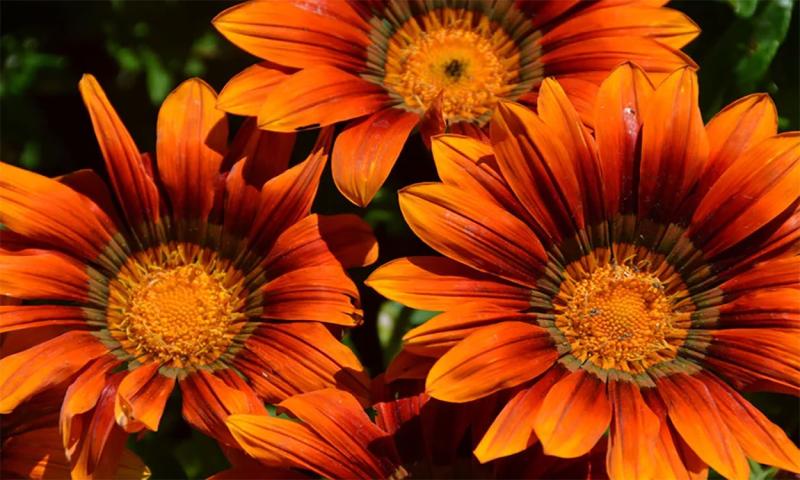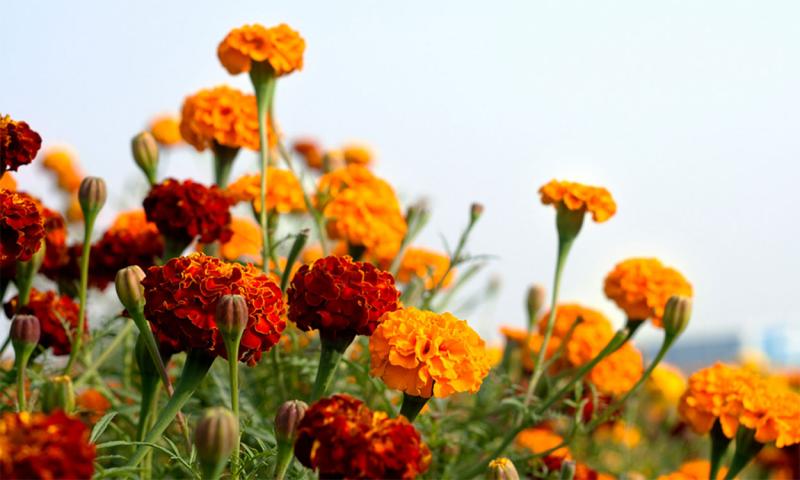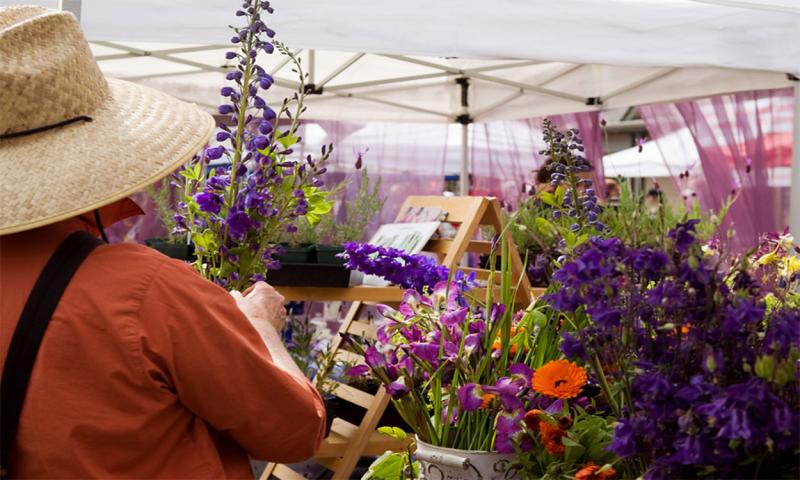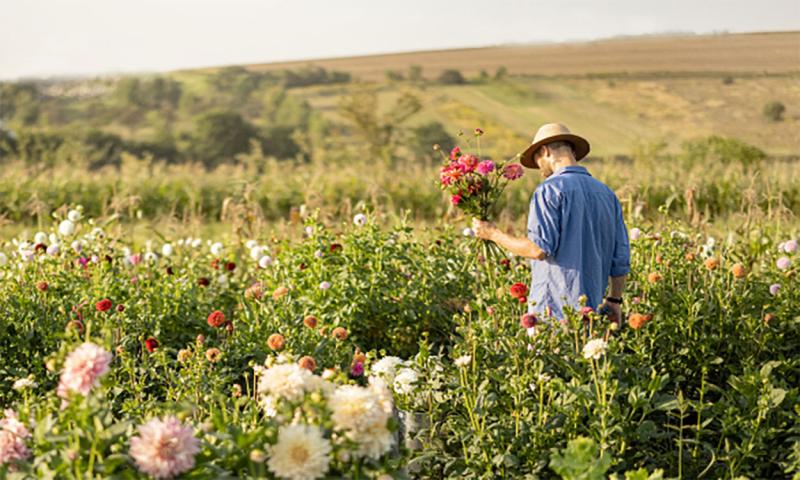
Written by Rebekah White, SDSU Agriculture Leadership, Education, Communication and Science Department undergraduate student, under the direction and review of Kristine Lang and Rhoda Burrows, former Professor & SDSU Extension Horticulture Specialist. Special thanks to Andrew Moeller and Regan Jacoby for peer review of this publication.
Introduction
Cut flowers are any flowers or flower bud that is cut from the plant and used decoratively. Cut flowers are very adaptable. They can go in anything from a bouquet to a vase, to a wreath, and more. The cut flower market in the United States can be an opportunity for small-scale producers who want to supplement their other crops, and they also offer benefits to large-scale producers who want to compete against the international market with local flowers. When planting cut flowers, you may want to investigate fulfilling some of your customers’ other floral needs. You can do this by planting supplemental greenery to sell to fill out arrangements.
This article will discuss some of the basic cut flowers that a producer could grow, where to market them, and some of the basic considerations that need to be taken into consideration when planning to grow cut flowers, including production, harvest and post-harvest basics, as well as labor and budget considerations.
What to Grow

When planning what to plant, you need to decide if you want to practice monoculture or variety. Are you going to grow every part of a bouquet or just the most eye-catching part? You also need to take into consideration the amount of time you have. Perennials from seed don’t usually produce flowers until the second year, but annuals will bloom the year they are planted. You will, however, have to replant annuals every year.
Make sure you check and take into consideration when the flowers will bloom when you decide to grow them for your operation; flowers need to be started early. Some bulbs may need staking for support, especially if you are in an area with a lot of wind, so keep that in mind when choosing your flowers. Here are some examples of flowers that generally do well in the Midwest, but make sure to double-check for your area before you plant them.
Annuals
- Marigold
- Lisianthus
- Cosmos
- Salvia
- Snapdragon
- Statice
- Zinnia
- Strawflower
- Celosia
- Gomphrena
- Amaranthus
- Cosmos
- Black-eyed Susan
- Sunflower
Spring Flowering
Bulbs
- Tulip
- Daffodil
- Lily of the Valley
Perennials
- Hellebores
- Bleeding Heart
- Peonies
- Lady’s Mantle
Summer Flowering
Bulbs
- Dahlia
- Gladiolus
- Lily
Perennials
- Iris
- Liatris
- Coneflowers
- Eryngium
- Poppies
- Astilbe
- Clematis
- Yarrow
- Garden Phlox
Late-Summer/Fall Flowering
Perennials
- Sedum, Autumn Joy and similar-types
- Perennial Black-Eyed Susan
- Chrysanthemum
- Aster
- Daisy
- Carnation
- Columbine
- Heliopsis
Greenery
- Artemisia and Baby's-Breath
- Ferns
- Ornamental grasses
Marketing
Markets for cut flowers shift as consumer demands do, and producers need to be adaptable when deciding which types of cut flowers they choose to grow. As a producer, you need to decide if you are are selling single flowers or bunches, one flower variety at a time, or in sets. You also need to decide if you want to try making your own flower arrangements and doing value-added products. Getting the flowers from the producer to the final customer as quickly as possible is one of the most-important goals of marketing, because getting the freshest flowers is always a consideration for the cut flower market.
There are lots of ways to market cut flowers, but they may not all work for where you are. That said, potential markets for your cut flowers, may include some or several of the avenues listed below.
Potential Markets

- Farmers markets
- Roadside stands
- U-cut
- Wholesale
- Supermarkets
- Garden centers
- Craft stores
- Florist shops
- Hotels
- Restaurants
- Caterers
- Community Supported Agriculture shares
- Event planners
- On-farm sales
Production Considerations

When starting your cut flowers, remember:
- Most cut flowers like well-drained soil and full sun.
- Use mulch to prevent weed competition.
- Protect the plants from the wind with barriers for a windbreak, as broken and bent stems are worth a lot less or nothing at all.
- Some plants may need trellis netting for support and wind protection.
During harvest, cut the flowers during the cool hours of the day. Regularly clean your tools to prevent the spread of disease. Place stems in water and move buckets to a cooling shed or processing area as soon as possible. Most stems need stored at 32 to 35 degrees Fahrenheit and 90% humidity for optimum vase life. There are exceptions, so be sure to know the post-harvest handling and storage temperatures for each flower variety you are planning on growing.
Labor and Budget Considerations

Labor is another major consideration when deciding to start your own cut flower business. Harvest and post-harvest are the most labor-intense times to produce cut flowers.
Cut flowers are a very hands-on operation, from pre-planting to sales, so make sure you have prepared a detailed budget before you start so you aren’t surprised by all the input costs. The costs from your budget will help you know how much you need to make selling the cut flowers to make a profit.
Whether you are adding cut flowers to an existing farm business, or starting your cut flower farm from scratch, consider trying a few different types of flowers to get started. You can expand the types of flowers you produce and grow your business as you learn what market channels and crops are most profitable for your farm.
References and Recommended Reading
- Darras. (2020). The chilling injury effect in cut flowers: a brief review. The Journal of Horticultural Science & Biotechnology, 95(1), 1–7.
- Ernst, M., R. Painter, and C. Scott. (2021). Cut Flower Production in Tennessee. CCDCPA-CP-3. Lexington, KY: Center for Crop Diversification, University of Kentucky College of Agriculture, Food and Environment.
- Gucker, D. B., Anderson, C., & Steele, E. (2020, April 24). Start to finish: Growing a cut Flower Garden. Illinois Extension. Retrieved April 8, 2023.
- Janssen, D. (n.d.). Plant Flowers for Cutting (cutflowers). Nebraska Extension in Lancaster County. Retrieved April 8, 2023.
- Kaiser, C. and M. Ernst. (2018). Field-grown Specialty Cut flowers. CCD-CP-70. Lexington, KY: Center for Crop Diversification, University of Kentucky College of Agriculture, Food and Environment.
- Penn State Extension. (2012, December 17). Cut flower production. Penn State Extension. Retrieved April 10, 2023.
- Sandborn, D. (2022, January 21). Plan now for a beautiful flower cutting garden. MSU Extension. Retrieved April 8, 2023.
- University of Kentucky Center for Crop Diversification. (n.d.). Cut flowers. Center for Crop Diversification. Retrieved April 8, 2023.


